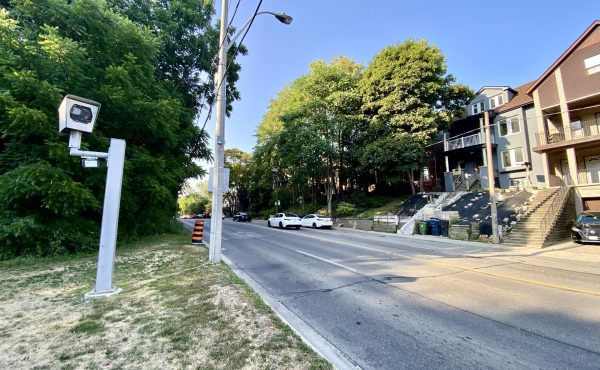How many people would buy a new version of a home appliance knowing that it is seven times more likely to cause injury to a child than its traditional counterpart? Not many, you say. Yet on our public roads we allow the proliferation of pickup trucks that are seven times more likely than a conventional car to kill a child that is struck. How can this be, you ask — and why has no level of government intervened?
Studies that confirm the greater fatality risk of pickups to children are neither new nor surprising, given the high, blunt front-end of a pickup and the short stature of a child. A child is much more likely to be struck in the head and upper body (including vital organs) than the legs. Adult pedestrians in crashes suffer similar impacts, though the risk of death, while higher, is not as disturbing as that for children.
Ironically, the front-end height of vehicles has continued to grow even as our understanding of the danger has improved. A comprehensive U.S. report in 2024 found that for every 10-centimetre increase in front-end vehicle height, a pedestrian that is hit bears a 22 percent increase in the risk of death. Cyclists face similar fatality risks in a crash.
Despite this clear and present danger, advertisements do not warn consumers, let alone other road users, about this threat to children. A general public ignorance reigns.
Fortunately, there is an easy fix: obligatory warnings on any advertisement for pickups. So far, however, federal officials at Transport Canada and Health Canada have shown little interest, despite the life-saving effectiveness of warnings that have long been required for cancer-causing tobacco products.
Could it be that the utility of pickups is so great that the sacrifice of our children’s lives is seen as an acceptable cost? It’s highly unlikely. With the right information most people would demand government action, beginning with changes to the front-end design of pickups. In fact, the front-end height has little to do with the capacity to haul heavy goods or to pull large objects – features that are often touted, along with off-roading, in ads but do not respond to everyday needs. Despite their exaggerated size, pickups most often serve as (expensive) passenger vehicles.
The underlying reason for the growth in front-end height is largely about the marketing of pickups, convincing buyers that their purchase will bestow upon them qualities of ruggedness, independence, and freedom. The lack of utility in front-end height is most starkly illustrated with the electric pickup. What’s behind the front-end? Literally nothing, except empty space.
Surely no one would be pleased with a product that apparently enhances their sense of power (and, for some, machismo) if it meant putting a vulnerable child at greater risk.
A trade-off involving the lives of children is shamefully unnecessary.
The work of our nation-wide coalition (the Coalition to Reduce Auto Size Hazards (C.R.A.S.H.)) has confirmed that the federal and many provincial governments have been largely indifferent to the problem, managing only excuses for passing the buck. Even Ontario’s Chief Coroner, in the past an effective difference-maker for road safety, only offered, in answer to our call for a death review for pickups, to acknowledge the greater fatality risks and a pat on the back for our comprehensive report and recommendations.
The reasons for optimism across Canada are as yet scant. A borough of Montreal imposed higher permit parking fees for pickups and large SUVs. The City of Toronto is considering action, including the review of its own vehicle purchasing policy and existing parking fees. Canada’s new Minister of Transportation, Chrystia Freeland, has in the past supported pedestrian road safety improvements. And after a summer of heatwaves and wildfires, new federal ministers in the health and climate change portfolios surely appreciate the climate crisis to which the tailpipes of pickups make an oversized contribution.
There may be nothing that we value more than the safety of our children, but when it comes to pickups this priority is largely invisible.
Albert Koehl is an environmental lawyer, author of Wheeling Through Toronto, and a Coordinator of the Coalition to Reduce Auto Size Hazards (C.R.A.S.H.).
Photo by Albert Koehl





One comment
Safety for all is first!